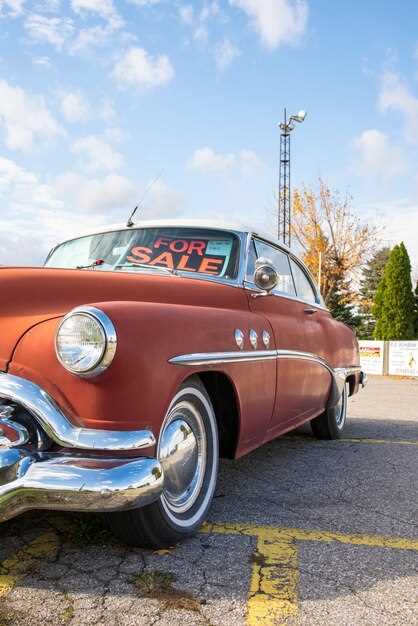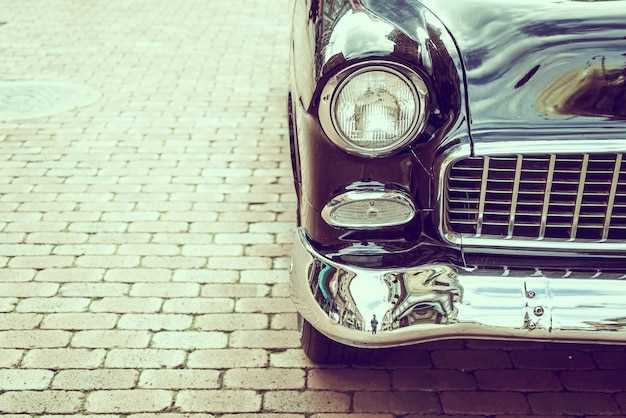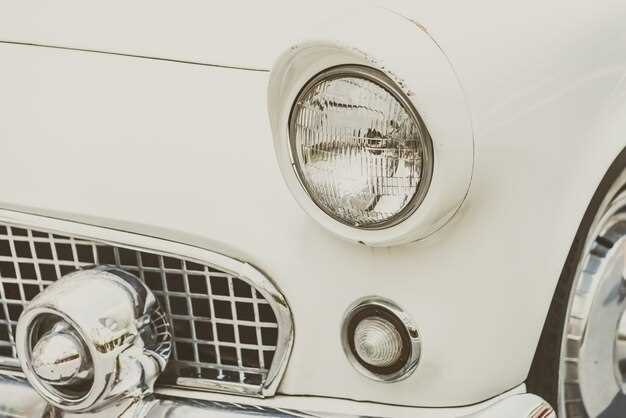If you’re seeking sheer automotive rarity, focus on models that have captured enthusiasts’ hearts while remaining elusive. Consider the 1937 Talbot-Lago T150-C-SS Teardrop Coupe; only about 14 of these stunning cars were built. Their streamlined design and luxurious details make them a coveted prize among collectors.
Next, look at the 1955 Ferrari 410 Sport Spider. With only two units produced, this car isn’t just a symbol of vintage racing – it’s a masterpiece of craftsmanship. Legendary drivers like Juan Manuel Fangio have graced this model, enhancing its allure and value.
To truly appreciate rarity, don’t miss the 1957 Maserati 450S. With just 10 examples made, its powerful V8 engine delivers unforgettable performance. The blend of beauty and speed makes this Maserati a spectacular find.
In addition, the 1962 Shelby Cobra 260 stands out with only 75 units manufactured. This sports car revolutionized racing in the 1960s, and its limited production means it remains a prized possession for any classic car collector.
Exploring these legendary models showcases not just rarity, but also the stories and engineering marvels behind each vehicle. Whether you’re a collector or an enthusiast, keeping these classics on your radar opens doors to incredible automotive history.
Identifying the Rarest Models by Country
To spot the rarest classic cars, begin with Europe. Models like the Ferrari 250 GTO from Italy stand out, with only 39 units produced. Its racing pedigree and design make it highly sought after.
France boasts the Bugatti Type 57SC Atlante, with around 30 examples remaining. It is known for its Art Deco styling and outstanding performance, making it a gem among collectors.
In Germany, the Mercedes-Benz 540K Cabriolet A commands attention. Produced in the late 1930s, its elegance and rarity–fewer than 25 still exist–secure its place in luxury automotive history.
Moving to the United States, the Tucker 48 captures interest with only 51 models made. Its innovative features and unique design make it a standout in American car culture.
Japan features the Nissan R390 GT1, with limited production for racing homologation. Only 22 cars were ever built, making it a rare find for enthusiasts.
Australia has its classic beauty in the 1971 Holden Torana GTR XU-1. With just 3,000 units produced, its motorsport heritage and style make it highly collectible.
Each of these models highlights the rich automotive history within their respective countries. Automobile enthusiasts should seek them out for their rarity and historical significance.
Top Auction Houses for Purchasing Rare Classic Cars
Consider Bonhams for a rich history in classic car auctions, offering a blend of expertise and luxury. Their sales often feature significant vehicles, making it a prime destination for collectors seeking high-quality classics.
Mecum Auctions specializes in muscle cars and American classics, delivering a wide array of options. Their events attract enthusiastic bidders and present an engaging experience with plenty of opportunities to snag rare finds.
Gooding & Co. is recognized for exceptional auction results, particularly in the high-end classic market. They focus on quality over quantity, showcasing vehicles that have interesting histories or unique features, making it a great choice for discerning collectors.
RM Sotheby’s combines luxury with accessibility, presenting a variety of classic cars, from vintage racers to prestigious marques. Their international reach gives buyers exposure to a global inventory, catering to various tastes and budgets.
Bring a Trailer offers a modern twist on classic car auctions. With an online platform, it brings together a community of enthusiasts and allows for a transparent bidding process, ideal for those who prefer a more hands-on, interactive experience.
Silverstone Auctions focuses on British automobiles, making it a go-to for collectors of iconic UK brands. Their themed auctions often feature unique racing history cars, enhancing the appeal for buyers interested in classic competition vehicles.
Finally, Barrett-Jackson provides a unique blend of auction and entertainment with a lively atmosphere. Known for offering a wide range of vehicles, including custom builds and restorations, it’s suitable for anyone looking for a dynamic purchasing experience.
How to Authenticate a Classic Car’s Rarity
Verify the vehicle’s VIN against manufacturer records. Each classic car has a unique Vehicle Identification Number that reveals crucial details such as the model year, manufacturing location, and original specifications. Cross-reference the VIN with trusted databases to confirm authenticity.
Inspect the factory paperwork. Original documents like build sheets, service records, and sales brochures add credibility. They offer insights into production numbers and special features that impact rarity.
Research production numbers. Limited production runs often indicate increased rarity. Reference resources such as automotive publications, club records, or online forums that specialize in specific makes and models.
Check for matching numbers. A classic car’s engine, transmission, and rear end should ideally match the original specifications. Discrepancies may affect a car’s value and authenticity, so verify all components with the original documentation.
Examine the condition and provenance. A car with a well-documented history and minimal modifications is generally more desirable. Look for signs of wear consistent with age, and consider any restorations, as they can influence rarity status.
Consult with experts. Engage classic car appraisers or join automotive clubs that focus on your model. Experienced collectors can provide insights based on trends within the community.
Participate in car shows. Networking with enthusiasts and experts allows for firsthand discussions about rarity and value. Learning from others’ experiences strengthens your understanding of what makes a classic car rare.
Maintenance Tips for Preserving Rare Classic Cars
Regular inspections of your classic car help catch potential issues early. Check fluid levels, tire pressure, and battery health at least once a month.
Use a moisture absorber inside the vehicle to prevent rust. This is especially crucial in humid environments where oxidation can damage metal components.
Invest in high-quality car covers. These protect against dust, UV rays, and scratches when the car is not in use. Look for breathable materials to avoid trapping moisture.
Apply a wax coating to the exterior every few months. It creates a barrier against harmful elements and enhances the car’s finish.
Maintain proper tire care. Rotate and balance tires regularly. Ensure that they are inflated to the manufacturer’s specifications to avoid uneven wear.
Store your vehicle in a climate-controlled environment. Temperature fluctuations can cause engine and interior degradation. If possible, keep it at a consistent temperature.
Use fuel stabilizers if your rare classic car is not driven frequently. This prevents the fuel from degrading and damaging the engine.
- Change the oil and filter regularly, using classic car-compatible lubricant.
- Inspect the brakes and suspension components frequently to ensure safety and performance.
- Keep a maintenance log to track repairs, upgrades, and services.
Consult a specialist mechanic familiar with classic cars for significant repairs. Regular communication about peculiar sounds or performance changes can help maintain the vehicle’s longevity.
Finally, treat your rare classic car with respect and care. Each drive should be an experience to enjoy, ensuring it remains a cherished part of automotive history for years to come.
Insurance Considerations for Classic Car Collectors
Choose specialized classic car insurance to best protect your prized vehicles. Standard auto policies may lack the necessary coverage for classic cars, which often appreciate in value. Evaluate policies that address agreed value coverage to prevent depreciation concerns.
Assess the mileage you plan on driving. Many classic car insurance providers offer lower premiums for limited mileage, so consider restricting your annual mileage if possible. This can lead to significant savings over time.
Look for policies that cover various events, including theft, fire, and natural disasters. It’s beneficial to select coverage that includes transportation and storage, especially when considering climate-controlled storage for valuable cars.
Understand the value of proper documentation. Keep detailed records, including receipts, photographs, and restoration documents, which can assist in claims processing and establish value in case of loss.
| Key Coverage Types | Description |
|---|---|
| Agreed Value | Pays out a predetermined amount agreed upon at policy initiation, protecting against depreciation. |
| Liability Coverage | Protects against damages to others in case of accident. |
| Comprehensive Coverage | Covers damages from non-collision events like theft, vandalism, and natural disasters. |
| Roadside Assistance | Offers support for breakdowns, ensuring peace of mind during drives. |
Review and adjust your policy regularly to reflect any changes in your collection’s value. This keeps your coverage relevant and helps prevent any gaps in protection.
Engage with an insurance agent who understands classic cars. They can guide you through options and help tailor a policy that aligns with your needs and collection specifics.
The Impact of Rarity on Classic Car Value Trends
Rarity directly influences classic car values. Limited production models, unique features, and historical significance elevate demand among collectors. For example, a 1967 Ferrari 275 GTB/4, with only 330 units made, commands prices exceeding $2 million at auctions.
Understanding rarity classifications can guide investments. Models with fewer than 100 units produced, often referred to as “ultra-rare,” see astronomical price jumps. For instance, the 1937 Talbot-Lago T150-C-SS Teardrop Coupe, with only 16 built, recently sold for over $13 million, highlighting how scarcity drives desirability.
Moreover, trends indicate that as vehicles age, their rarity remains a critical factor in value retention. Cars once deemed impractical or undesirable can appreciate dramatically. The 1980s Toyota Supra, once overlooked, gained status as a sought-after classic due to its limited runs and iconic design, showcasing changing perceptions of rarity.
Documented provenance adds another layer of value. A classic car’s racing history or celebrity ownership can significantly impact its market price. The 1955 Mercedes-Benz 300 SLR Uhlenhaut Coupe, once owned by Juan Manuel Fangio, is a prime example, valued at over $143 million following its sale, reinforcing rarity’s connection to high-profile backgrounds.
Investors should focus on models with strong historical significance and limited production runs. Research market trends and auctions to identify opportunities. By targeting rare vehicles with documented histories, a collector can not only enjoy the aesthetic pleasure of classic cars but also secure a sound investment.






